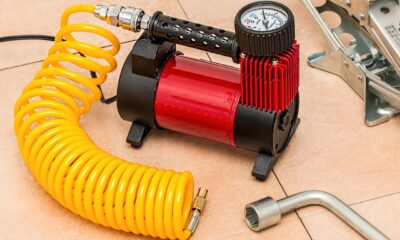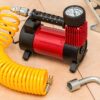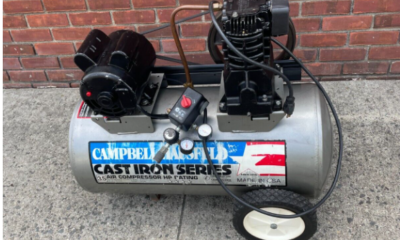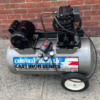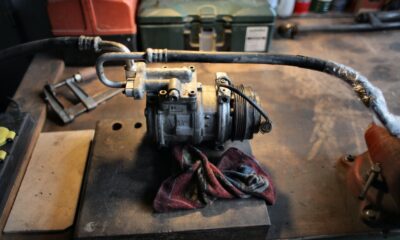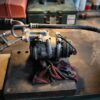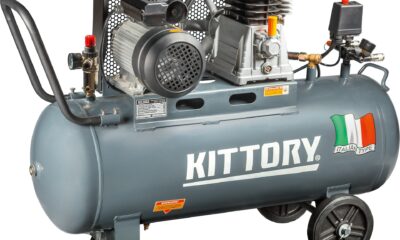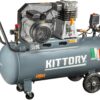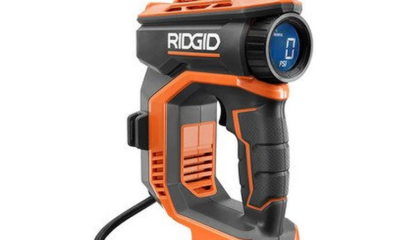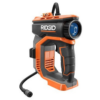If you are confused about what size air compressor you must have for your impact wrench, we have brought a solution. This article will explain the types, sizes and which ones suit best.
Let’s explore the options.
Air Compressor Size For The Impact Wrench
An impact wrench is one of the standard tools that can be operated using an air compressor as its power source. It generates power and torque for loosening or tightening fasteners using compressed air. The impact wrench can generate high torque output with minimal effort thanks to the air compressor, which feeds its compressed air continuously.
You should know the size of impact wrenches. Also, note that the airflow needs vary depending on the drive size of the impact wrench. Most impact wrenches have PSI requirements ranging from 90 PSI to 120 PSI, although some heavy-duty models may require higher pressures. So, checking the size of your impact wrench and the minimum CFM ratings is crucial.
Let us see the different sizes of impact wrenches. They come in four standard drive sizes:
- 1” Size (8 to 10 CFM for 90 PSI)
- 3/8″ Size (3 CFM for 90 PSI)
- 1/2″ Size (4 to 5 CFM for 90 PSI)
- 3/4″ Size
Things That Matter In This Regard
Here are the most important things that you must remember:
- Check the CFM requirement of your impact wrench. Impact wrenches typically have CFM requirements ranging from 3 CFM to 8 CFM or more, depending on their size and power.
- Ensure the air compressor’s CFM rating exceeds your impact wrench’s CFM requirement. An air compressor with a CFM output 1.5 to 2 times higher than the impact wrench’s CFM requirement is generally recommended. This buffer ensures sufficient airflow for consistent tool performance.
- Check that the air compressor can deliver the required PSI output for your impact wrench. To ensure proper operation, the air compressor’s maximum PSI rating should meet or exceed the impact wrench’s PSI requirement.
- Consider getting an air compressor with a higher-duty cycle if you plan on using the impact wrench for longer. The duty cycle indicates the percentage of time the compressor can operate in a given time frame without overheating. Higher-duty-cycle compressors are suitable for continuous or heavy-duty applications.
- Remember, the airflow from the air compressor should be more than one and a half times the minimum requirement of the impact wrench. For instance, if the impact wrench needs five cubic feet per minute (CFM) airflow at 90 pounds per square inch (PSI), the air compressor should have a rating of at least 7.5 CFM at 90 PSI.
How does the size of an air compressor’s tank determine the use of an impact wrench?
The size of the air compressor’s tank determines the duration of sustained use of an impact wrench. A larger tank is beneficial for work that requires consistent operation without interruptions, as it provides a sufficient reserve of compressed air. On the other hand, a smaller tank may be enough for less use of tool operation.
The duration you can use the impact wrench without turning on the motor depends on the air compressor’s tank size. There are air compressor tanks available that can store 80–100 gallons of air, and there are also smaller tank sizes, like 6 gallons and 16-gallons, available simultaneously.
When choosing an air compressor for impact wrench use, consider the anticipated workload and the duration of the tool’s operation. If you anticipate using the impact wrench for extended periods without interruptions, opting for a larger tank size would be beneficial. However, for occasional or shorter-duration use, a smaller tank may suffice.
Conclusion
So, when selecting an air compressor for an impact wrench, several factors come into play. The CFM and PSI requirements of the impact wrench are necessary pointers to keep in mind as they play an essential role in the air compressor’s capabilities. Always choose an air compressor that meets optimal performance and productivity requirements.
FAQs
1. Can I use an impact wrench with an air compressor with a higher CFM rating than the tool’s requirement?
Yes, you can use an impact wrench with an air compressor with a higher CFM rating than the tool’s requirement. This can provide a safety margin and ensure the impact wrench receives sufficient airflow for optimal performance.
2. What happens if I use an air compressor with a smaller tank for an impact wrench that requires continuous use?
Using an air compressor with a smaller tank may result in frequent interruptions. The tank will have a limited capacity to store compressed air, leading to more frequent pauses in tool operation as the compressor refills the tank.













